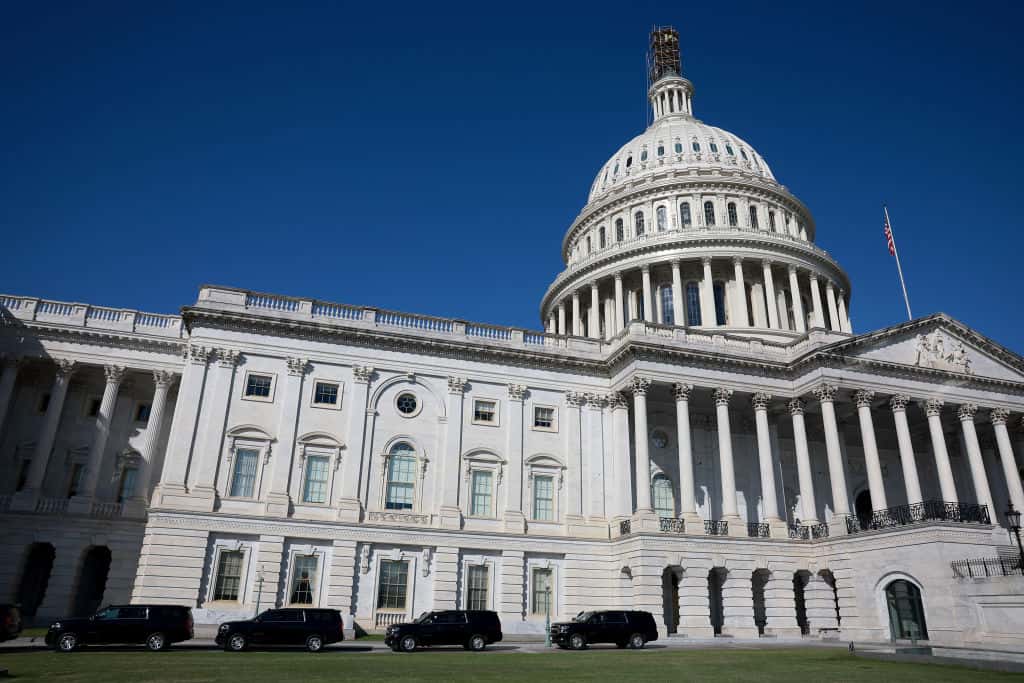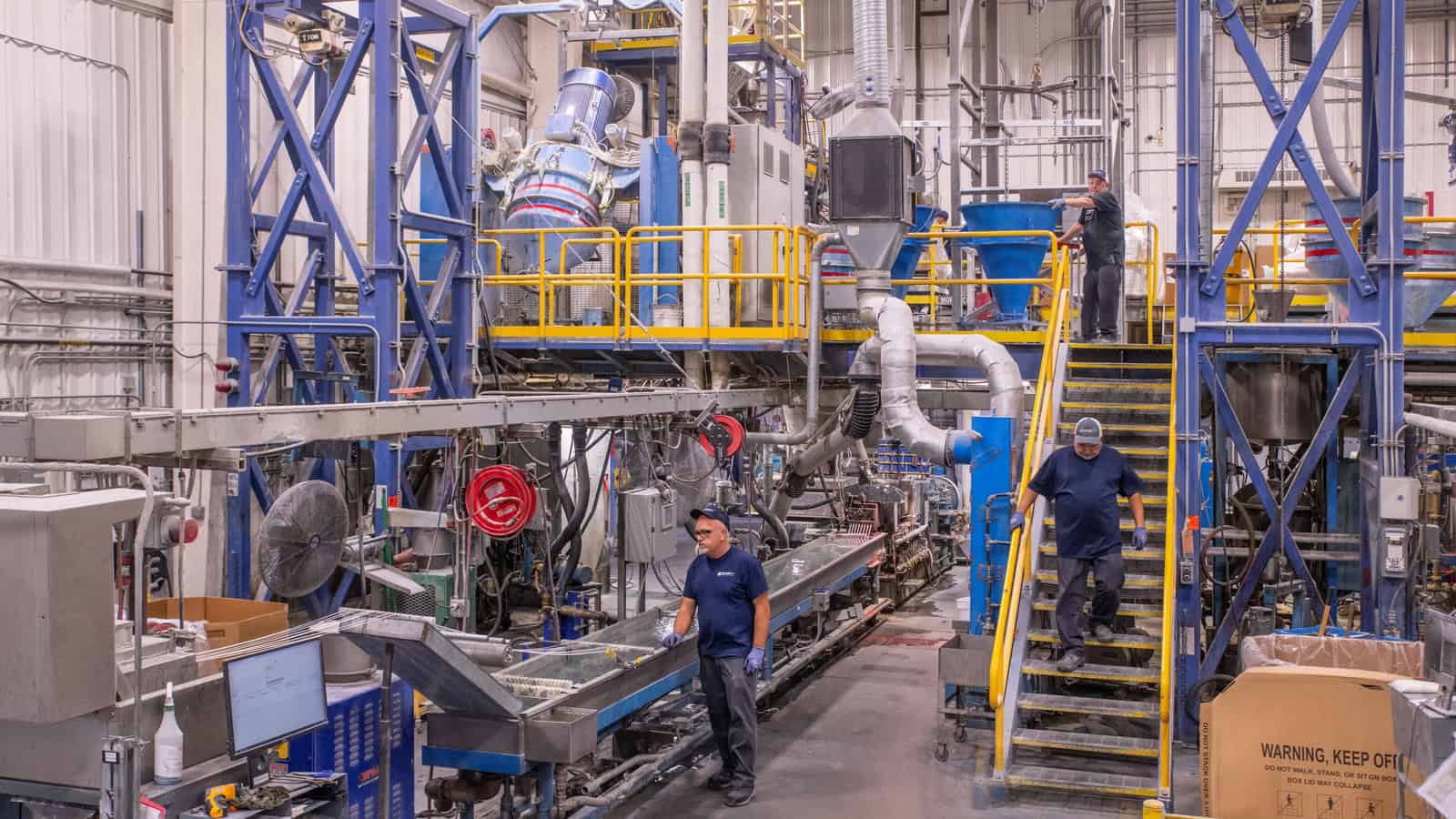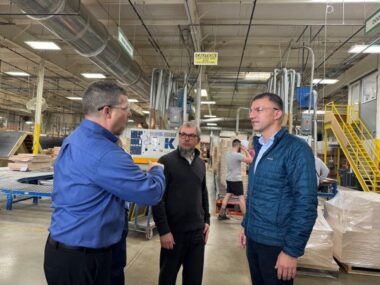NAM-Supported Bills Clear House Committee

The NAM this week advocated the passage of two pieces of manufacturing-critical legislation, successfully driving the agenda of a Wednesday House Energy and Commerce Committee markup.
What’s going on: The committee—with the NAM’s strong support—approved two bills that address longstanding manufacturing priorities:
- A congressional resolution disapproving of the Environmental Protection Agency’s harmful PM2.5 rule
- A bill instituting important pharmacy benefit manager reforms
Reversing an unworkable PM2.5 standard: The EPA announced a new, more restrictive particulate matter standard in February, reducing allowable levels from 12 micrograms per cubic meter of air to 9 micrograms—despite a standard of 9 being “essentially background levels in some of the country,” as the NAM has pointed out.
- “Manufacturers have sharply reduced particulate matter emissions, or PM2.5; as a result, industry in the United States has some of the cleanest and most efficient operations in the world,” NAM Vice President of Domestic Policy Chris Phalen told the committee.
- “Now, the vast majority of emissions are from sources well outside of our control, with fires, dirt roads and other nonpoint sources accounting for 84% of PM2.5 emissions,” Phalen continued. “[T]he EPA’s rule will make it more difficult for states to issue permits for the construction of new facilities or expansions of existing factories.”
- The committee’s PM2.5 resolution, offered under the Congressional Review Act, seeks to overturn the EPA’s unworkable standard.
Reforming PBMs: PBMs are unregulated middlemen whose business practices drive up health care costs for manufacturers and manufacturing workers.
- “By applying upward pressure to list prices that dictate what patients pay at the pharmacy counter, pocketing manufacturer rebates and failing to provide an appropriate level of transparency about their business practices, PBMs increase health care costs at the expense of all patients in America,” NAM Vice President of Domestic Policy Charles Crain said.
- Provisions in the NAM-supported Telehealth Modernization Act would increase transparency into PBMs’ business practices and delink their compensation from medicines’ list prices.
The last word: “Manufacturers commend the Energy and Commerce Committee for approving these important bills, which will reduce costs and enhance growth at manufacturers across the country—allowing our industry to continue to create jobs here at home and drive U.S. competitiveness on the world stage,” said NAM Managing Vice President of Policy Chris Netram.
Mapping the Impact of a Port Strike
Building permits rose 4.9% in August but are 6.5% lower than August 2023. Permits for single-family homes were 2.8% higher than July but were down 0.5% in the past year. Permits for buildings with five or more units surged 8.4% from July but are down a significant 16.8% in the past year. In August, housing starts increased 9.6% over the month and 3.9% over the year. Starts for single-family homes were up 15.8% from July and 5.2% from August 2023. On the other hand, starts for buildings with five or more units declined 6.7% from July and were down 6.2% from August 2023. Housing completions in August were up 9.2% from July and a significant 30.2% higher than August 2023. Single-family home completions were down 5.6% from July to 1,029,000 but up 8.4% over the year. Completions for buildings with five or more units rose 36.5% and were 79.2% higher than August 2023. In September, Philadelphia’s regional manufacturing activity was mixed. The index for current general business activity turned positive, rising from -7.0 to 1.7. Nearly 22% of firms reported increased activity this month, while 20% reported decreases and nearly 51% reported no change. On the other hand, the indexes for new orders and shipments declined and turned negative. Firms reported an increase in employment after declining last month, with the employment index rising back into positive territory at 10.7. Firms also provided forecasts on production levels, with a higher share of firms reporting an increase in production (nearly 38%) than those reporting a decrease (28%). Price indexes moved higher, with firms continuing to report overall increases in prices. The prices paid index rose to its highest reading since December 2022, reflecting the notable portion of firms experiencing higher input costs. The prices received index also rose, undoing the previous month’s decrease. Looking ahead, most future indicators increased. The index for future general business activity rose slightly to 15.8, indicating growing optimism among firms. A higher proportion of firms still expected increases in activity. Additionally, the new orders, shipments and future employment indexes also rose. Although the future prices paid index increased, the future prices received rose by a larger margin. Meanwhile, the future capital expenditures index moved up to its highest reading since March 2022. Manufacturing activity in New York state grew in September for the first time in nearly a year, with the headline general business conditions index rising 16 points to 11.5. The new orders index climbed 17 points to 9.4, a multiyear high, while the shipments index rose 18 points to 17.9, its highest level in a year and a half. Unfilled orders increased slightly, while inventories rose 11 points to zero, indicating inventories are now level after two months of declines. Delivery times were little changed, and supply availability was the same reading (-2.1) as August. Employment continued to shrink modestly, with the index for the number of employees coming in at -5.7. The average employee workweek recovered some after a steep drop the prior month, signaling a slight increase in hours worked. Input and selling prices were little changed, as reflected in the prices paid index at 23.2 and the prices received index at 7.4. Manufacturers continued to face rising costs while operating in a weakened pricing environment. Firms were more optimistic about the future. The future business activity index rose eight points to 30.6, with nearly 45% of respondents expecting conditions to improve over the next six months. However, the capital spending index fell 11 points, dipping below zero for the first time since 2020. Industrial production rose 0.8% in August after falling 0.9% in July. The decline in July was influenced by shutdowns due to Hurricane Beryl. Manufacturing output increased 0.9%, in part, due to a recovery in motor vehicles and parts production, which jumped nearly 10% in August. Meanwhile, manufacturing output excluding motor vehicles and parts production increased 0.3%. At 103.1% of its 2017 average, total industrial production in August was unchanged from the same month last year. Capacity utilization moved up to 78%, 1.7 percentage points below its long-term average from 1972 to 2023. In August, the majority of major market groups saw gains. The consumer goods index rose 0.7%, with a 10.5% increase in automotive products making up for its loss in the previous month. The materials index grew 0.9%, with gains in all its subcomponents. Defense and space equipment posted a modest increase of 0.5%. The business equipment index rose 1.4%, supported by a 6.6% gain in the transit equipment index. Durable goods manufacturing increased 2.1%. Apart from the large rebound in motor vehicles and parts, there were gains in primary metals (up 3.2%), electrical equipment, appliances and components (up 2.0%) and aerospace and miscellaneous transportation equipment (up 1.2%). Nondurable goods manufacturing, on the other hand, decreased 0.2% in August, with the largest losses in petroleum and coal products (down 2.3%) and apparel and leather (down 1.6%). Manufacturing capacity utilization increased 0.6% to 77.2%, which is 1.1 percentage points below the long-term average. To lower drug prices, Congress should undertake comprehensive reform of pharmacy benefit managers, not embrace price controls, the NAM told the Senate Tuesday. What’s going on: “Biopharmaceutical manufacturers are a critical part of the manufacturing economy,” NAM Vice President of Domestic Policy Charles Crain said ahead of a Senate Finance Committee hearing on health care costs. Threats to innovation: Instead of benefiting patients, “the IRA pricing mandates announced last month by the Department of Health and Human Services will … limit the capital manufacturers have available to put toward the astronomically high costs of developing a new medicine,” Crain told the committee, adding that the uncertainty introduced by price controls is also likely to dissuade early-stage investment in new treatments. PBM reform: To truly lower health care costs, Congress must rein in PBMs, Crain said. The NAM has called on Congress to adopt specific PBM reforms, including: The last word: “Instead of further embracing price controls, it is imperative that Congress act to lower drug prices by reining in PBMs’ problematic business practices and minimizing their ability to further damage the U.S. health care system,” Crain said. Pharmaceuticals manufacturers are increasingly turning to radioactive drugs in their battle against cancers (CNBC). What’s going on: Eli Lily, Bristol Myers Squibb and others “have spent some $10 billion on deals to acquire or work with radiopharmaceuticals makers,” which produce drugs containing radioactive isotopes, predicting that the technology will be effective in treating multiple cancer types. How it works: Radiopharmaceutical “drugs work by attaching radioactive material to a targeting molecule that searches for and attaches to a specific marker on cancer cells. The trick is finding markers that exist on cancer cells but not healthy cells. That can allow the treatment to deliver radiation to cancer cells and spare the rest of the body from the level of damage that comes with many cancer drugs.” More interest: Though radiopharmaceuticals have been around since the 1940s, they’ve only begun drawing big interest in recent years. In-house production: Among the key criteria in Lilly’s search for a firm to acquire: “whether companies were prepared to manufacture the drugs,” according to Eli Lilly Executive Vice President and President of Lilly Oncology Jacob Van Naarden. Safety and speed are everything: Each dose of Novartis’ Pluvicto has a GPS tracker to make sure it goes to the correct patient at the correct time, said Victor Bulto, president of the U.S. unit for Novartis. That’s because the therapies are only good for a few days once made. Special considerations: Radiopharmaceuticals come with unique challenges. Big opportunity: Though full understanding of radiopharmaceuticals’ potential may be years away, “[i]f we can be successful in expanding the target and tumor type repertoire, this could be a very big class of medicines,” Van Naarden said. The search for alternatives to chemicals called PFAS has been going on for years. Recently, materials design company Techmer PM created one—a new chemical for use in polymer processing. The new solution: Last year, the Clinton, Tennessee–based manufacturer introduced the HiTerra T5—a polymer processing aid that helps maintain film surface smoothness and die-lip buildup—which replaces traditional chemistry based on per- and polyfluoroalkyl substances. Why it’s critical: In March, the EPA issued the first federal reporting limits and guidelines for tracking the use of PFAS in manufacturing, along with other PFAS-related regulations. Individual states are also imposing their own restrictions on PFAS chemicals. More replacement efforts: Techmer PM is working closely with its customers to come up with additional PFAS alternatives, McHenry said. Unrealistic timelines: While the firm is hard at work developing potential replacements, the stringent deadlines that the EPA has set for the reporting and potential elimination is damaging, McHenry told us. The long view: For many applications, dependable alternatives will likely be found at some point, McHenry concluded. Rep. Yakym (at right) visits the shop floor of Kountry Wood Products in Nappanee, Indiana. For Rep. Rudy Yakym (R-IN), Indiana’s 2nd Congressional District isn’t just a place on the map—it’s the beating heart of America’s manufacturing sector. It’s a district he proudly refers to as the “manufacturing capital of America.” Personal connection: Representing this district in the House of Representatives, the fourth-generation Hoosier who was born and raised in South Bend brings a personal connection to manufacturing that shapes his vision for the future of the industry and fiscal responsibility in the United States. This deep-rooted connection to manufacturing is more than just a talking point for Rep. Yakym—it’s a cornerstone of his identity and legislative agenda. Zoom out: Rep. Yakym’s commitment to manufacturing isn’t just lip service. He led a significant effort in the House of Representatives, rallying more than 140 Republican colleagues to support a tax package that would restore full R&D expensing, bonus depreciation and interest deductibility—key provisions of the NAM’s “Manufacturing Wins” campaign to preserve tax reform in its entirety. A collaborative spirit: Rep. Yakym’s dedication to bipartisanship is clear. He noted that if he had to choose a member of Congress of the opposing party he’d start a manufacturing company with, he didn’t hesitate to name Rep. Jimmy Panetta (D-CA). Rep. Yakym said they would produce RV components, an industry he knows well from his district, which includes Elkhart, the “RV Capital of the World.” The vision: Looking ahead, Rep. Yakym envisions a future where manufacturing continues to be a pillar of the American economy, especially in his district. He wants the next generation to understand that viable, rewarding career paths in manufacturing are right in their backyard. What’s next: As a congressman, Rep. Yakym’s primary goal is to restore fiscal responsibility in Washington. He sees this as essential not just for the country’s economic health, but also for national security. Only at the NAM: Shop Talk is a new series that aims to help you get to know the personal connections, insights and priorities of policymakers who impact our industry. Signs of a Rebound for Residential Construction
Philadelphia Fed Manufacturing Survey Turns Positive in September
NY State Manufacturing Activity Grows for the first time in 2024
Industrial production bounces back in August
NAM: Lower Costs Through PBM Reform, Not Price Controls

Drug Makers Invest in Radiopharmaceuticals

Techmer PM Offers Safe Alternatives to PFAS for Manufacturers

NAM Shop Talk Series: Meet Rep. Rudy Yakym

